What are beveled mirrors and how are they located?
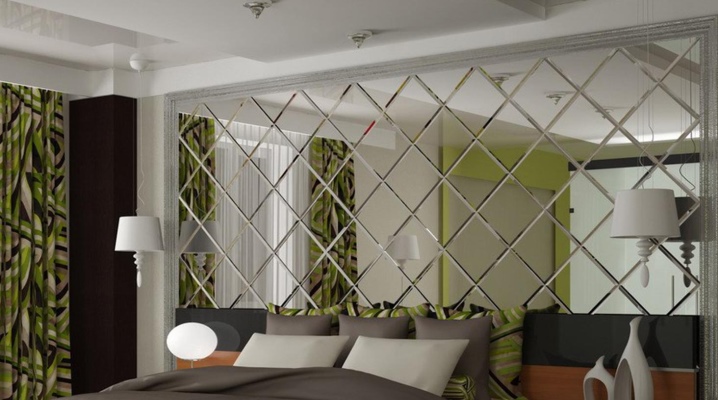
A facetted mirror is a highlight of the interior, transforming any setting. From the material of this article you will learn what it is like, what it means "mirror with a facet", what features it has. In addition, we will look at its design and placement options.

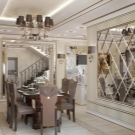
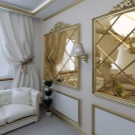


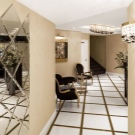
Peculiarities
In translation from French, facet means "chamfer". This is the outer edge, a special treatment for the outer mirror edge.
The classic technology of execution involves processing the edge at an angle of 45 degrees, thanks to which light refraction is ensured.
A facetted mirror shines beautifully, it looks expensive and presentable. Beveling mirrors is different from engraving. It is performed on high-precision equipment in automatic mode. In this case, the surface is grinded, smoothed and polished along a given profile.
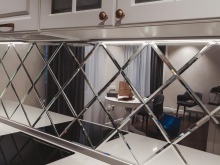
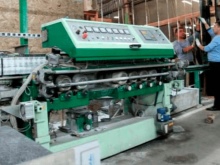
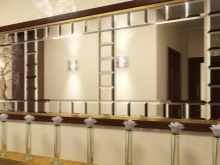
Such a framing is safe - it is impossible to cut yourself on the beveled edge. Facet mirrors differ in appearance and manufacturing method. Their key disadvantage is the need for regular grooming. Cleaning with a regular rag is not always effective in this case. We have to resort to the use of special cleaning agents.
During processing, special grinding equipment is used. With its help, the sharp edge of the mirror sheet is processed very precisely and accurately. At the same time, small irregularities, chips are eliminated (defects leading to the appearance of cracks). Basically, bevelling increases the strength of the mirror.
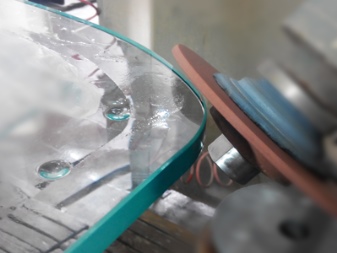
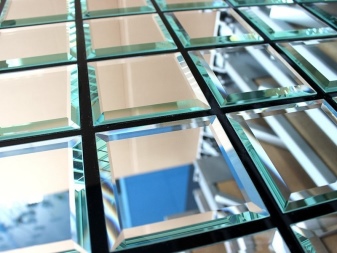
It is appropriate in a modern style, suitable for the embodiment of a classic interior. In this case, it may involve the use of mirrors with and without frames.
Frames are selected for a specific interior style (for example, high-tech, Scandinavian).
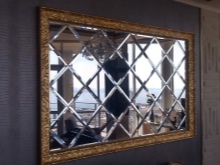
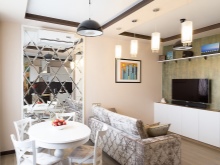

Overview of beveling types
Beveling mirrors can be artistic and double, with a curved or straight bevel. Each type of cut has its own characteristics.
A simple facet is the most common and budgetary one. Its edges are a single cut. The double facet looks more complicated. Its cut is two longitudinal bevels (wide and narrow). The brilliance of such edges is enhanced, the decorative effect is more subtle. The triple facet is distinguished by the execution of three cuts. Each of them is already the previous one.
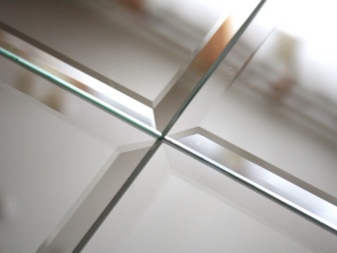
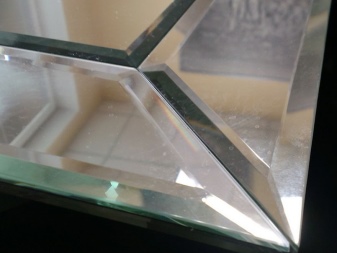
The curvilinearity and straightness of the facet are associated with the shape of the mirror sheet. A rectilinear mirror has a shape of a square, rectangle, rhombus and other format without rounding and smoothness of lines. These mirrors have straight beveled lines.
Curvilinear cut is typical for oval and round mirrors. In addition, it can be found on mirrors of an unusual shape (for example, made in the form of figures of animals, flowers, plants).
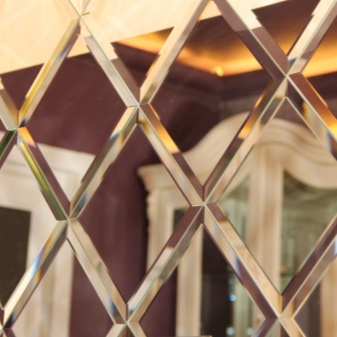
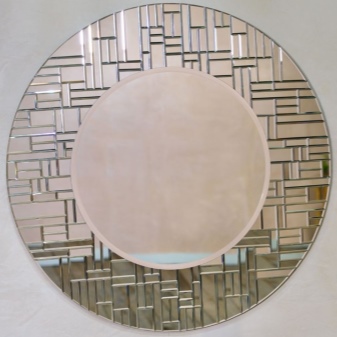
The volumetric beveled effect is a separate option for the processing of edges around the entire perimeter. It resembles a diamond cut, enhances not only the light, but also the reflective effect. Also, the facet is one- and two-sided.
In addition, bevelling can be polished and matt. The surface of the polished panels is transparent.
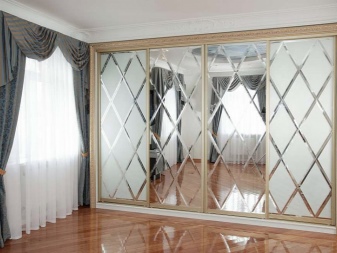
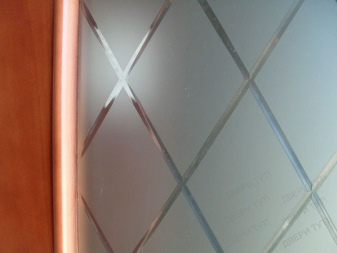
By the type of purpose, beveled mirrors are functional and decorative. Products of the first group involve the use of mirrors for their intended purpose.Analogs of the second group are designed to decorate the space and change it visually. For example, with their help they create the effect of enlarging the room, increase its illumination.
Depending on the purpose, beveled mirrors can be mounted in bathrooms, halls, offices, kitchens.
For example, they make unique kitchen aprons. They are used to decorate niches, symmetrical inserts on the walls of bedrooms. They equip office premises.
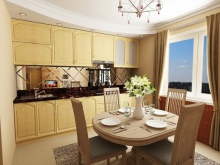
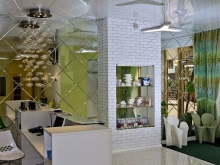
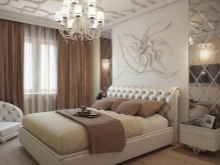
Sizes and shapes
The shapes of faceted mirrors are typical and non-standard. Facet decor in the interior can be embodied in the most unexpected way. So, in addition to the traditional facet mirror, it can be a mirror panel. The composition consists of diamonds, beveled at the same angle. Panels can be small and voluminous, flat and curly, with a narrow and wide bevel.
Cut sizes vary depending on the type of facet. For example, the parameters of the straight-line version are 50x50 mm with a sheet thickness of 3-19 mm. The cut width can vary from 4-30 mm. The cut angle can be as small as 3 to 7 degrees.
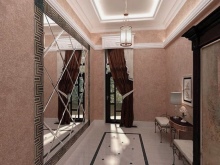
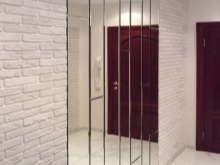
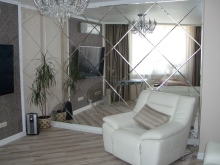
A round faceted mirror, related to the curvilinear type, has different edge dimensions. In this case, the width of the chamfer at the edges can vary from 5-10 to 50 mm. At the same time, a panel with a thickness of 3-19 mm is used in the work with the minimum parameters of length and width - 110x180 mm. Chamfer is applied at an angle of 7-45 degrees.
The facet shape can be geometric. Wherein the sizes of rhombuses, squares, hexagons are different (for example, 30x30, 500x500, 50x70 mm).
Also, the figures can be arbitrary. This allows you to create mosaic compositions of the most bizarre shapes.
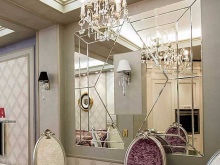
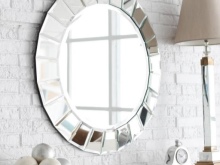
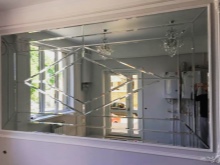
Design options
Facet mirrors are designed in a variety of ways. In addition to the usual design and panels, it can be a mirrored wall. Such decoration makes the interior bright and unique.
This design is typical for rooms for different purposes (for example, in a bedroom, living room).


A mirrored wall with a facet can be located opposite a window or light-colored furnishings. This will increase the light reflection effect.
This design is often complemented by lighting. In this case, the lamps are selected in the same style with the selected interior of a particular dwelling.
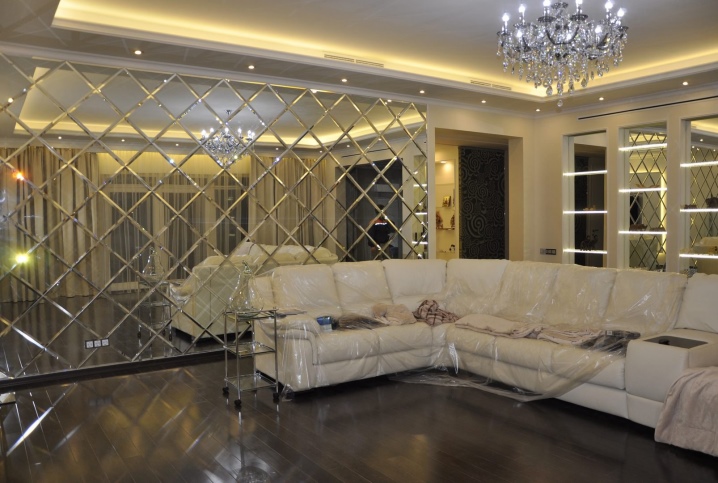
A beveled mirror is often placed on furniture. For example, cabinet doors can be mirrored. A mirrored coffee table can be faceted. Also, the mirror inserts of a headset, a chest of drawers, a base cabinet, a hinged shelf are made out with a facet.

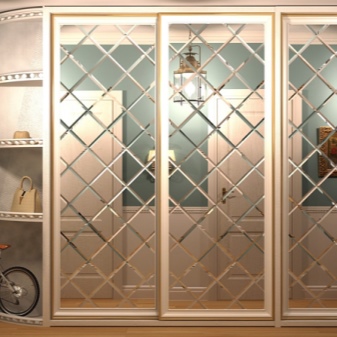
One of the simpler solutions is mirror tiles. With this material, you can lay out accent zones in different rooms of the dwelling. It can be part of a wall or a specific area.
The facet can be patterned. It can be located not only along the edges of the mirror, but also in the center of the canvas. In this case, the sheet is glued to a special glue. The canvas is also placed in baguette frames. Thanks to this, the effect of completeness of the interior composition is achieved.
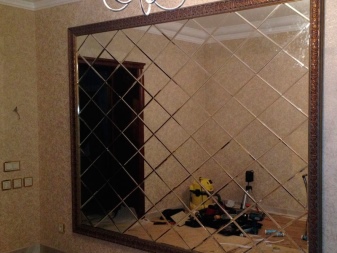
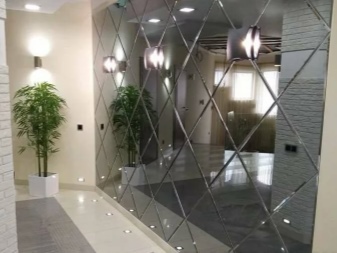
How to glue?
Depending on the type, faceted mirrors are glued to walls or ceilings like ceramic tiles. At the same time, strict geometry and solidity of the plane are observed. Single mirrors are attached to a pre-selected location in a specific room.
Mirror tiles with a facet are glued to the prepared base. To do this, remove the old coating (for example, wallpaper, tiles), get rid of the remnants of glue or plaster. If necessary, perform leveling and elimination of minor defects in the base.
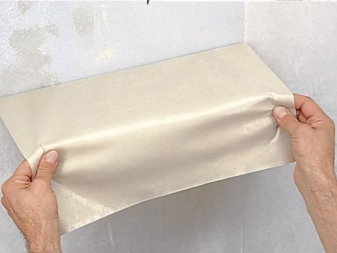

Then the surface is primed and left to dry. Next, markup is performed. Moreover, if laying on the entire wall is planned, they try to leave solid elements for the top. After checking the layout, proceed with the installation. If necessary, use a support rail or a metal profile for this.
The work uses a special tile adhesive, developed for fixing mirrors. A composition based on epoxy resin or silicone sealant is also suitable. The tile is laid from the far corner from bottom to top. First, the bottom row is mounted, then the one above it, and so on until the end of the working surface.
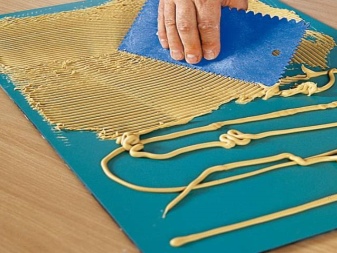

As with ceramics, the identity of the butt joints must be observed. To do this, use dividing crosses for small gaps between the elements. To fix the element, glue is applied to its back surface, then wait a couple of minutes and attach the fragment to the base. The board is pressed, the excess adhesive is immediately removed with a damp cloth or sponge.
If it is necessary to cut the element, use a diamond glass cutter with oil. At the end of the installation, the coating is allowed to grasp. After a day, the seams are filled.
As for the size of the butt joints, their minimum values are 1.5-2 mm. The expansion gap must be observed especially in rooms with high humidity.
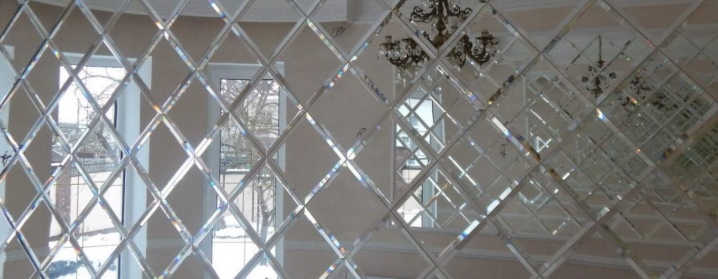
How to post?
The placement of beveled mirrors depends on their type and mounting location.
On the wall
Wall-mounted placement is considered one of the traditional placement options. This can be a wall mirror panel, a wall, a classic mirror. It gives the room completeness and organicity.

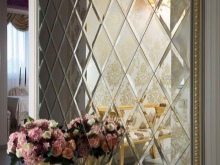
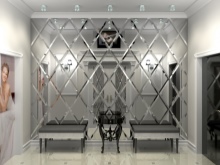
On the ceiling
This method of location is used less often, but it brings freshness and atmosphere to the atmosphere.
This technique is used when decorating spacious halls and living rooms. This is usually a diamond design decorated with a center light.
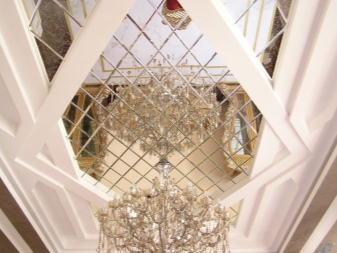
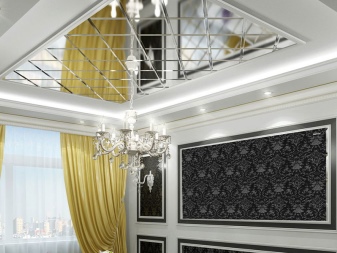
Built into furniture
Mirrored doors of furniture sets and cabinets radically transform the space. Facades with a chamfer shimmering in the light also look extraordinary.
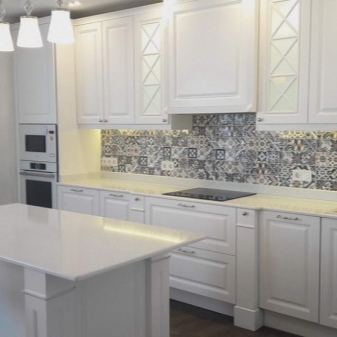
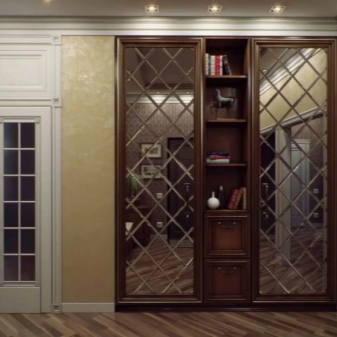
Use in different rooms
The placement of the mirror often depends on the particular perspective of a particular room. For example, in a spacious hallway, it can be placed on a free wall, not covered by furniture... This can be an option with a wide bevel around the entire perimeter.
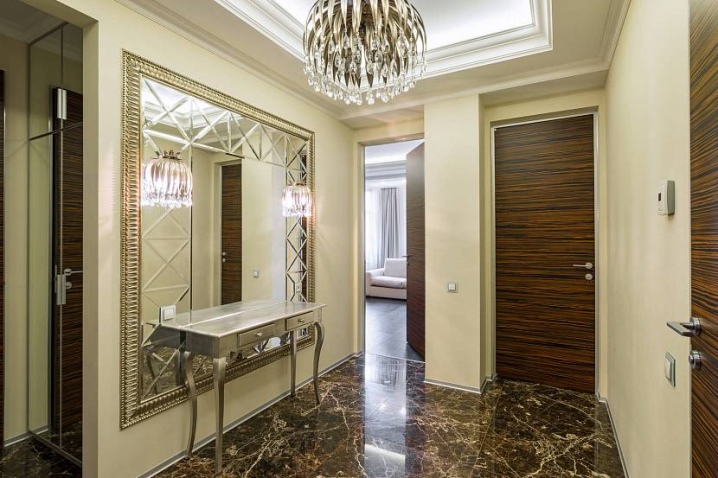
The living room can be decorated with symmetrical beveled and backlit frosted panels. They can be positioned on either side of the sofa. They will turn an ordinary interior into a festive one.

The spacious guest room can accommodate framed mirrors on either side of the fireplace. In this case, the facet pattern can be elongated diamond-shaped.
A single mirror sheet of a small size will look good over a false fireplace.
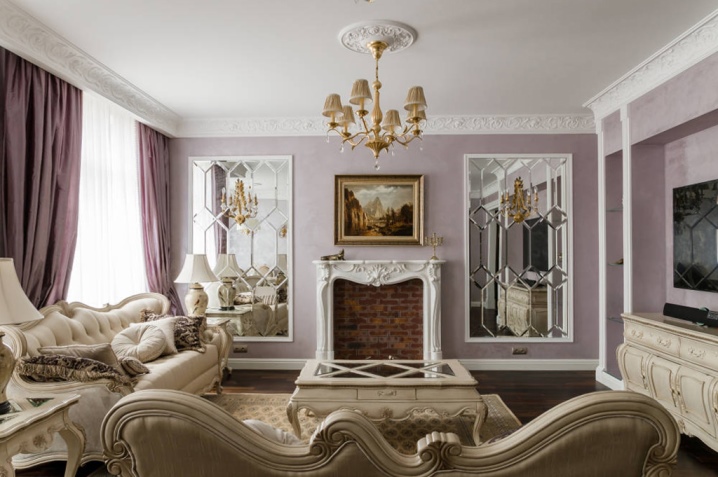
When choosing a design in the kitchen, it is necessary to dose the volume of mirror surfaces.
It is better to decorate the interior with just a few inserts so as not to simplify the design. A facet in a small space should be modest and small.
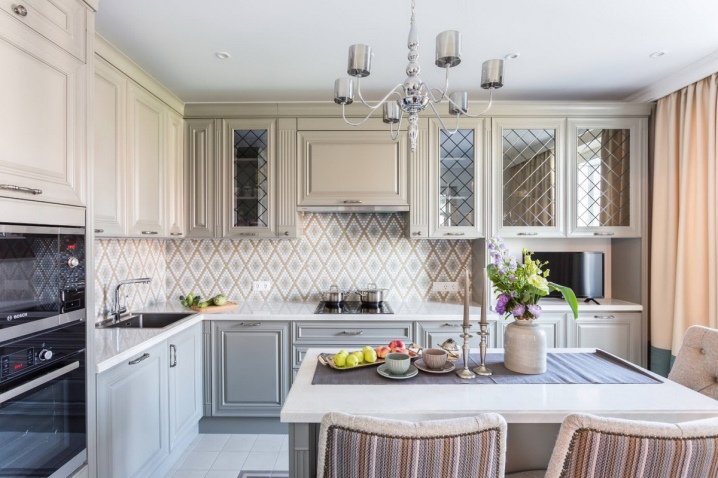
In the dining room, unique decor can be placed on the wall next to the dining group.
Moreover, it is not at all necessary to have the finish on the entire wall. Its lower part can be decorated with floor cabinets, which is practical and functional.
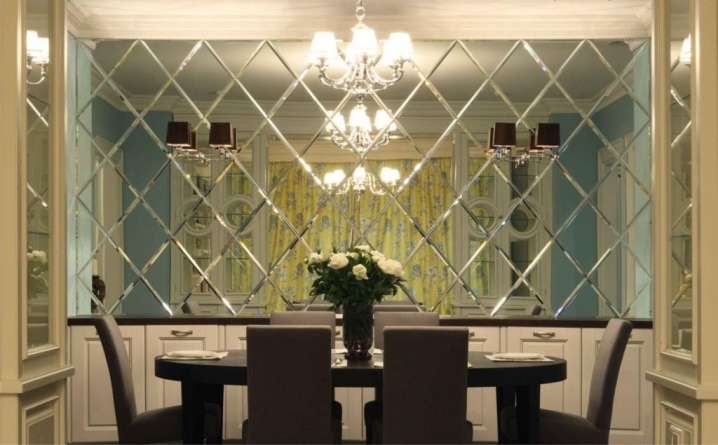
If you do not want to overload the bedroom space with an abundance of mirror inserts, you can decorate the walls with narrow canvases in frames. The larger the area of the room, the larger the facet can be.

In a recreation room equipped with built-in furniture, a finished mirror sheet can be placed not on all cabinet doors, but only on the central ones. At the same time, the design of the facet can be different for door inserts and mezzanines.
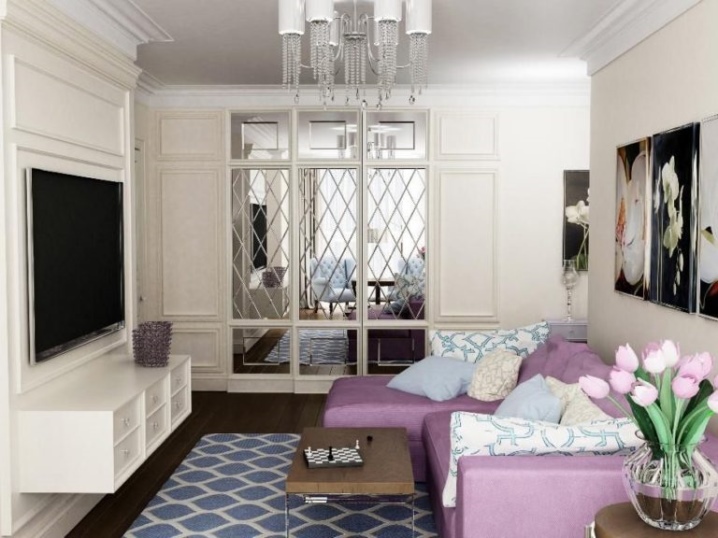
In the bathroom, the easiest way is to install a mirror above the sink. It is convenient and practical, suitable for large and small spaces. The edge can be finished in a variety of ways, this is determined by the style of the interior and the taste preferences of the home owners.
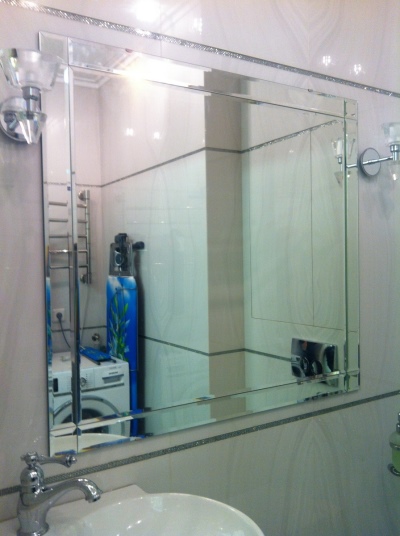













The comment was sent successfully.